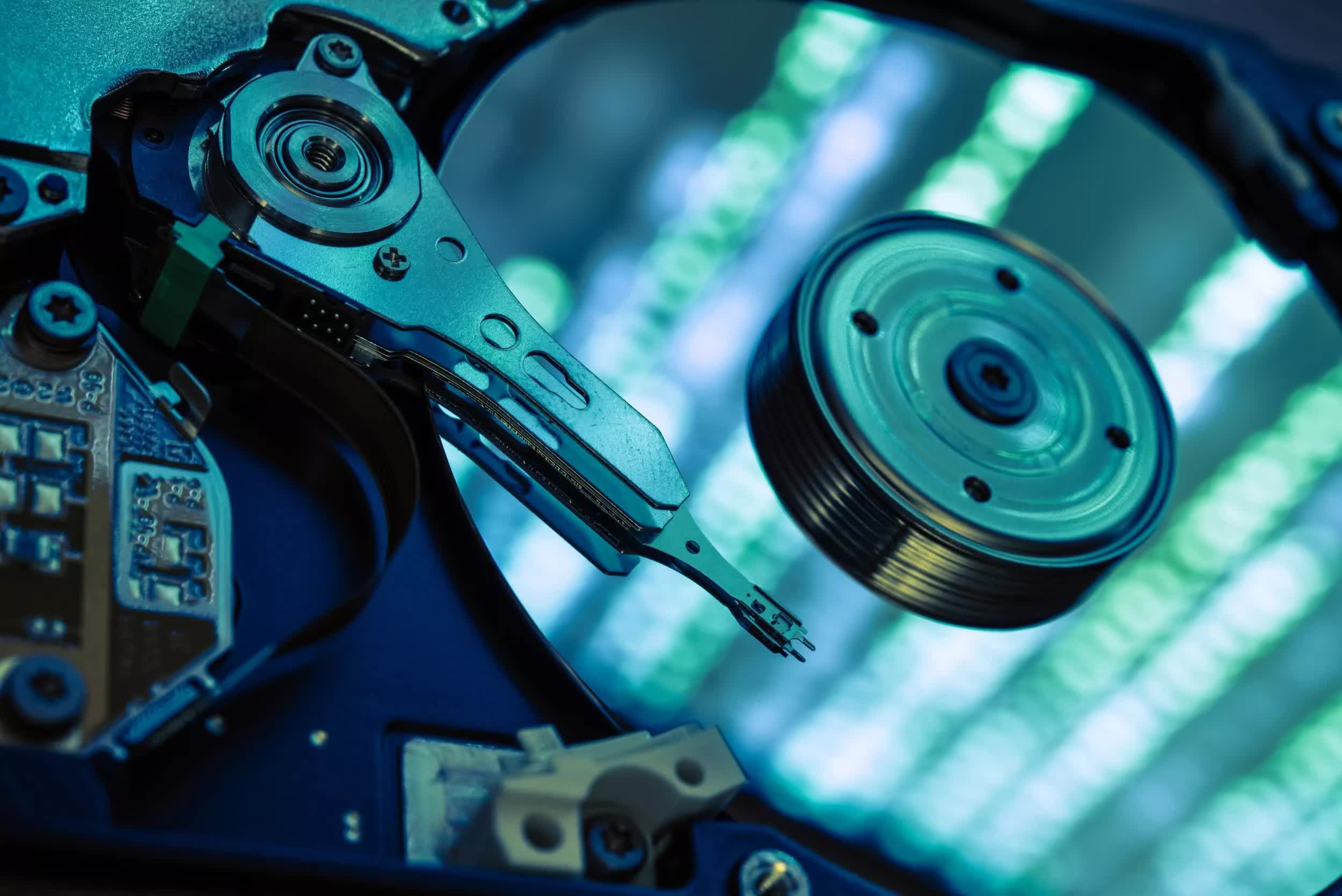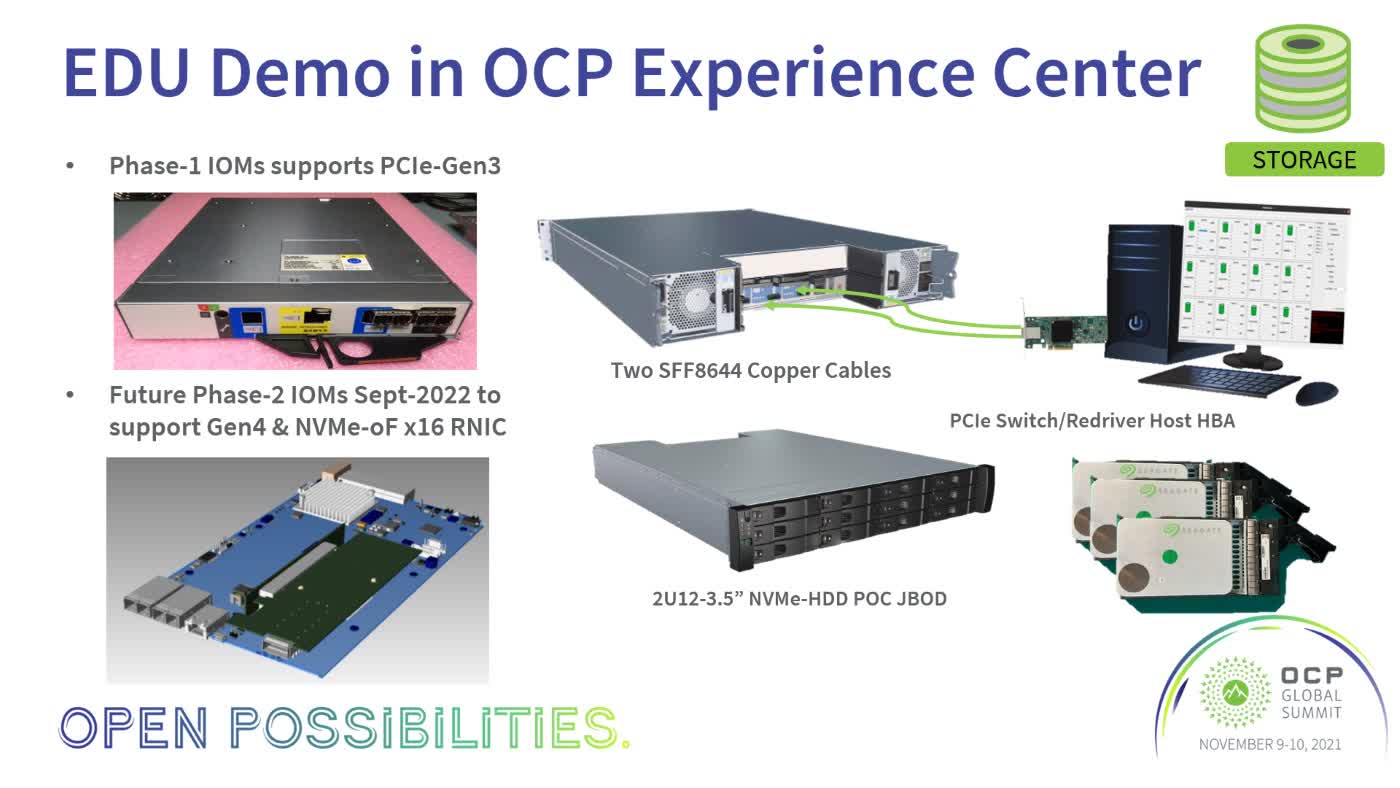What just happened? Seagate showed off a hard disk drive that connects through NVMe at the Open Computing Project (OCP) global summit this week. Limiting a faster PCIe connection to the speeds of a spinning disk drive might be counterintuitive, but it could still have benefits outside of consumer desktop use.

Seagate has detailed the project on its blog, including how it works and the possible benefits. There's also a separate document that goes into more depth about the specifications. Seagate plans to make it available to customers in the coming years.
Diagrams show the hard drive connected through PCIe3 and PCIe4, using proof-of-concept enclosures. The HDD uses native NVMe ports, but Seagate says it has "Tri-Mode" SAS, SATA, and NVMe receivers.
Seagate plans to make it available to "key customers" in September 2022, with broader availability for single and dual-port models in the middle of 2024.

The idea of an NVMe HDD may seem odd on its face. Consumers have been moving from HDDs to SSDs because solid state technology can read and move data faster. The move towards connecting storage to motherboards through NVMe instead of SATA increased speeds even more. Using an NVMe connection for an HDD may not provide any speed benefits in comparison, and indeed Seagate's explanation doesn't mention the drive's performance at all.
Instead, Seagate claims the main benefits are cost and simplicity, particularly for servers and workstations, which may still use HDDs a lot because they're cheaper per gigabyte than SSDs. Going from SATA to NVMe means fewer moving parts, making the drives more affordable and less prone to failure. Seagate also says these drives may scale more easily and consume less energy.
https://www.techspot.com/news/92191-seagate-demonstrates-industry-first-nvme-hdd-ocp-summit.html
